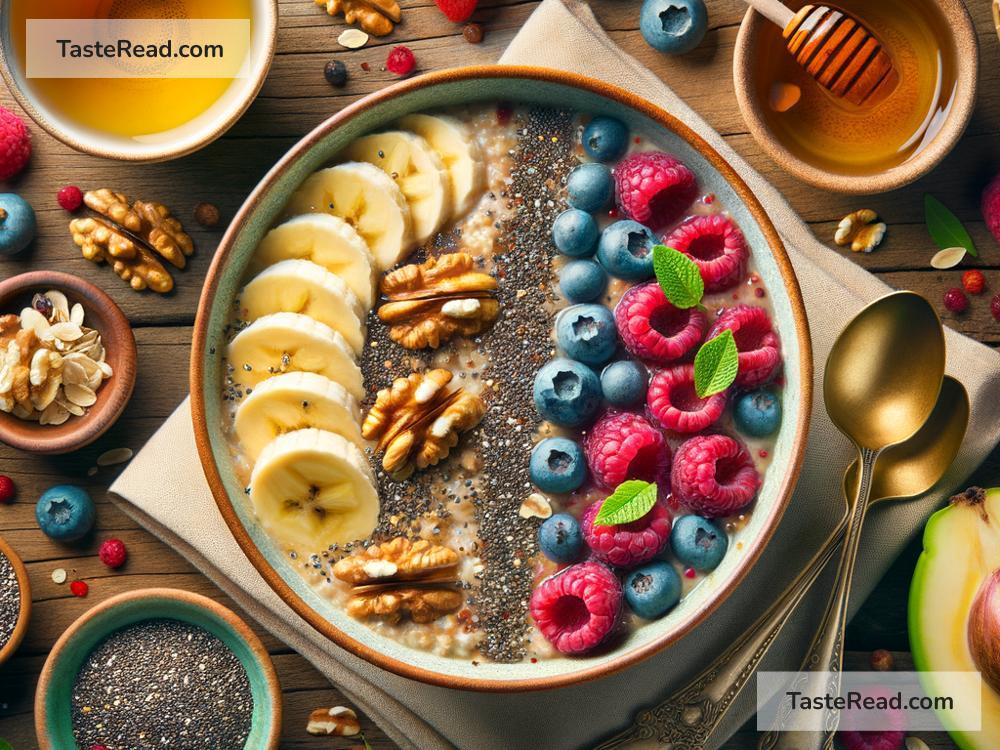Foods That Help Reduce PMS Symptoms
PMS, or premenstrual syndrome, can be a frustrating experience for many women. Mood swings, bloating, fatigue, headaches, and cramps are just a few of the symptoms that often show up before periods. While some women may need medical help, there’s good news: what you eat can make a big difference in how you feel during PMS. Certain foods can ease the discomfort and boost your mood, leaving you feeling healthier and more in control.
In this article, we’ll dive into simple, everyday foods that can help reduce PMS symptoms and support your body during this time.
1. Bananas for Mood Swings and Cramping
Bananas are rich in vitamin B6 and potassium, which are both important for soothing PMS symptoms. Vitamin B6 can help improve your mood and reduce irritability, while potassium can ease muscle cramps caused by PMS. These qualities make bananas a great snack to have when you’re feeling down or experiencing cramps.
Whether you slice them into oatmeal, blend them into a smoothie, or eat them plain, bananas are an easy way to calm your body and mind.
2. Dark Chocolate for Cravings and Mood Boosting
Cravings during PMS are common, especially for sweets. Instead of reaching for sugary processed snacks, opt for dark chocolate. Dark chocolate is high in magnesium, which can help relax your muscles, reduce bloating, and improve your mood. It’s also known for increasing the production of serotonin – the “feel-good” hormone – which can combat PMS-related sadness and irritability.
Be sure to stick to chocolate with at least 70% cocoa content to get the best benefits while avoiding unnecessary sugar.
3. Leafy Greens for Bloating and Fatigue
Spinach, kale, and other leafy green vegetables are packed with nutrients, such as magnesium, calcium, and iron. Calcium is great for balancing hormones and reducing mood swings, while magnesium can decrease bloating, headaches, and cramps. Additionally, iron helps fight fatigue, which is common during PMS, especially for women who experience heavy periods.
You can include leafy greens in salads, soups, smoothies, or sauté them as a side dish. If you’re not a fan of greens, you might want to pair them with flavorful spices or add them to pasta dishes for a tastier option.
4. Yogurt for Hormonal Balance and Cramping
Yogurt is an excellent source of calcium, which can help regulate hormonal changes during PMS. Studies suggest that women who consume calcium-rich foods experience fewer PMS symptoms, including mood swings and cramps. Yogurt also contains probiotics, which promote gut health, helping reduce bloating and digestive issues.
Stick to plain, unsweetened yogurt to avoid added sugar, and jazz it up with fresh fruits, nuts, or granola for extra flavor and nutrients.
5. Nuts and Seeds for Energy and Hormonal Health
Snacking on almonds, walnuts, sunflower seeds, or chia seeds can do wonders for PMS. These nuts and seeds are loaded with healthy fats, magnesium, and vitamin E, all of which support hormonal balance and reduce cramps. Vitamin E, in particular, may help with breast tenderness, one of the common PMS symptoms.
Try adding them to your favorite smoothie, sprinkling them over a salad, or simply munching on them as a healthy snack during the day.
6. Fatty Fish for Reducing Inflammation and Pain
Salmon, mackerel, and other fatty fish are excellent sources of omega-3 fatty acids, which help reduce inflammation in the body. Omega-3s can also ease menstrual cramps and improve circulation, which is important during PMS. Eating fatty fish regularly supports overall brain health and mood, helping to reduce feelings of anxiety or depression.
If you don’t eat fish, you can get omega-3s from flaxseeds, chia seeds, or walnuts. Another option is to take a fish oil supplement after consulting your doctor.
7. Whole Grains for Energy and Mood Stability
Oats, quinoa, brown rice, and other whole grains are packed with fiber, which can help reduce bloating and improve digestion. Plus, whole grains contain B vitamins, which are essential for boosting energy and stabilizing mood during PMS. The slow-releasing carbs in whole grains can help prevent sudden drops in blood sugar levels, which can worsen fatigue and irritability.
Start your day with a bowl of oatmeal, bake some homemade quinoa patties, or replace white rice with brown rice for better energy throughout the day.
8. Herbal Teas for Relaxation and Cramp Relief
Herbal teas like chamomile, ginger, and peppermint can provide significant relief during PMS. Chamomile tea is known for its calming properties and its ability to reduce cramps and anxiety. Ginger tea can help with bloating and nausea, while peppermint tea can soothe headaches and digestive discomfort.
Sip on a warm mug of herbal tea as a soothing ritual during PMS, and watch your symptoms gradually improve.
9. Avocados for Hormonal Balance and Skin Health
Avocados are rich in healthy fats, magnesium, and potassium, which can all help reduce PMS symptoms. Healthy fats are great for balancing hormones, while magnesium and potassium work together to ease cramps and bloating.
Mash an avocado onto some whole-grain toast, toss it into a salad, or blend it into a creamy smoothie for a belly-friendly snack.
Final Thoughts
PMS can be challenging, but making small changes to what you eat can have a big impact on how you feel. Incorporating foods like bananas, dark chocolate, leafy greens, yogurt, nuts, fatty fish, whole grains, herbal teas, and avocados into your diet during this time can help ease symptoms and support your body naturally.
Stay hydrated, eat balanced meals, and listen to your body’s needs during PMS. And remember, everyone’s body is different – what works for one person may not work for another. Experiment with these options and find what makes you feel better.
By choosing the right foods, you can take control of your PMS symptoms and get back to focusing on the things that matter to you. Happy eating!


